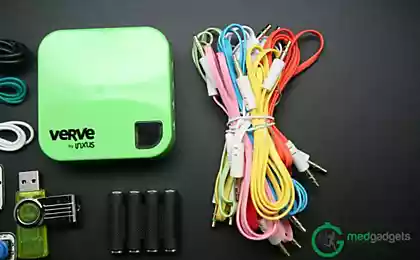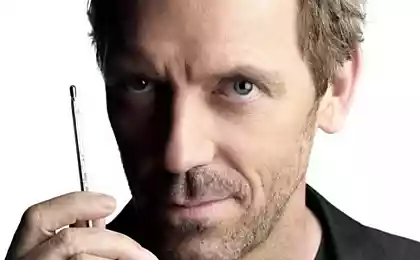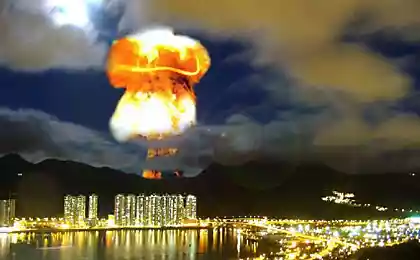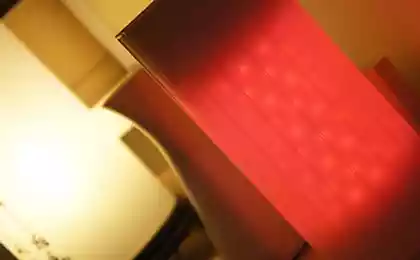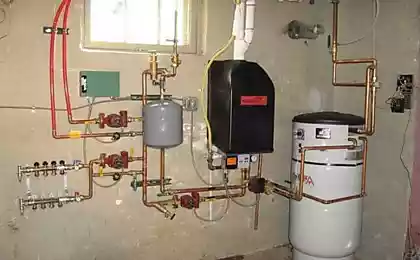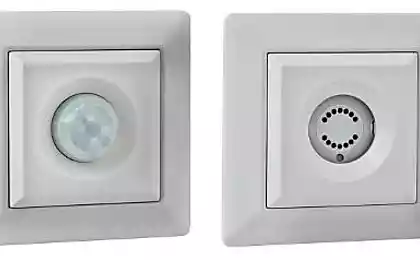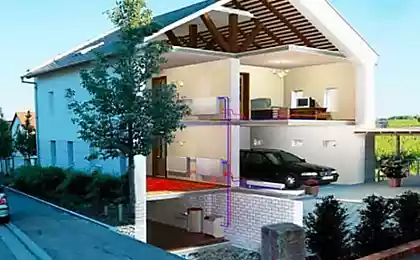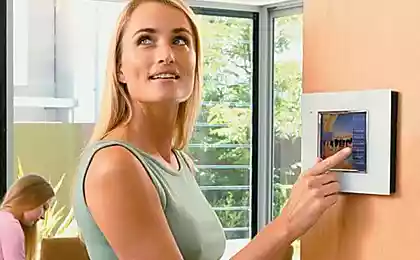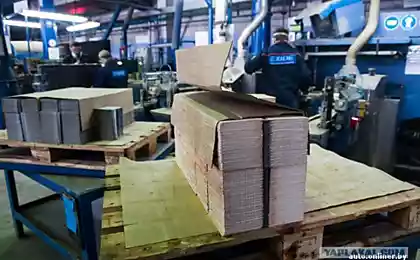725
Smart home: the climate or path of the comfort step by step
Smart home ceases to be abstract when you go to the store, lay out their wishlist and they give you a large package with a bunch of boxes. Coming home and taking out a dozen devices at first horrified. But spending a night or two, you begin to realize that the smart house is not so difficult, and many problems are easily solved in a few mouse clicks.
I've written about smart home gave the cat to freeze and how a smart home increases the comfort of being in the room. This time I will tell how smart home allowed me to save 30% of costs on heating, filled the house with fresh air and not allowed to freeze the water this winter. So, take out of the pack boxes and go home to teach the mind to reason!
But before you start to install the receivers and Executive blocks of the smart home, I will make a little insight into the functioning of engineering systems, to understand why, what and where is mounted. If you want to skip to the installation of a smart block, just scroll to the end of each block, where I will show you how to mount and the system of smart home.
I break the material into chunks to make it easier to read. The first and largest block is about heating, the second, smaller, about ventilation and the third is about saving the health of the water supply. This is probably the three most important factors that allow us to live in their own house in the winter. Without heat or water in the house to live not just work, but without proper ventilation the spring in the walls and ceiling can easily detect the fungus.
Heating
Heating systems there are many and they are often selected on the basis of available opportunities. I start from the fact that my house made of SIP panels, and so heat loss will not be as great as, say, a brick house. Itself SIP panel in the context looks like this: the foam, both sides covered with OSB (or OSB — Oriented strand Board).
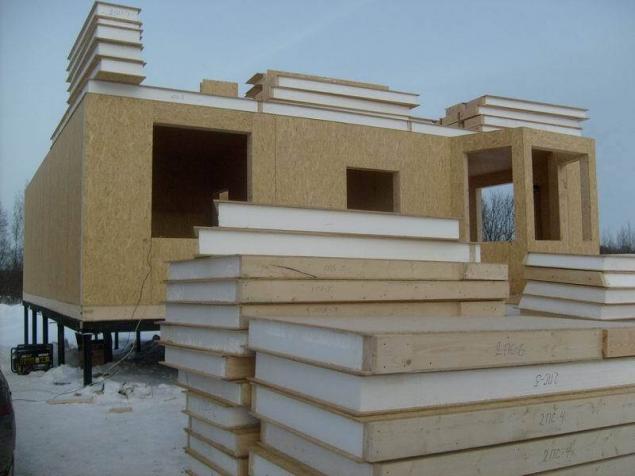
Factory made panel according to a pre-approved plan, sign, and collectors shall be issued documentation indicating the order of connections of the panels. Built two-storey house with an area of 200 square meters in 2-3 weeks. You can make this house better in the winter or dry in summer. In the winter, because the snow is easily swept out with a broom and dry in the summer so as not to soak the foam in the seams between the panels. The foam is very hygroscopic and readily absorbs moisture.
After Assembly of the house and install Windows and doors, it turns out the thermos. The house is practically "breathes", unlike log or frame house, so you will need to mount a forced supply and exhaust ventilation. I'll provide more detail about later.
For the choice of heating system is required to determine the heat source and coolant.
Gas: since my village has no mains gas, natural gas boiler, I have deleted almost immediately. Why almost? Because I've also considered the possibility of installation of the tank and heating of propane-butane. A local company put me the minimum score for a barrel, Gazgolder with installation starting from 300 thousand rubles. In this gas pipe is mounted to the house for some money. And the room with a gas boiler must be specially prepared. With video surveillance systems easier, but the gas is still flammable. Thus, I switched to the second type of fuel.
Diesel or waste oilBoilers are stable, adjustment and set-up is that you can play in a wide temperature range. Diesel does not explode as it happens with vapors of gasoline. But the experience of operation of boilers on diesel fuel of my friends suggests that to find the normal fuel quality is still a problem. It may also be an odor. This option I rejected.
Pellets: Many of you have seen kitty litter of pressed wood chips is wood pellets. They are well lit, have good performance. Many boilers with pellet burners is easily converted to burn solid fuel — wood or coal. But even with a good boiler with a tank requires replenishment of this hopper with pellets every 2-3 days. In addition, boiler and pipe. Pellet boilers are volatile. In General, not my option.
Electric boiler: of the: electricity — one of the cheapest energy, if no mains gas. The electric boiler does not need to do pipe, fuel will not spill and will not ignite, there is no need every N hours to throw firewood. All the maintenance is reduced to timely examination of components and assemblies. Most importantly — when you should operate it does not require attention. Disadvantage: requires stable power and three-phase (highly desirable) connection to the electricity grid.
So, I chose the boiler.
For myself, I chose the easiest method of heat transfer liquid. That is, the boiler heats the liquid, the liquid transmits heat to the heaters. And here the question arose: battery or warm the floor.
Battery: cheaper and easier to install. Easily replaced by others. Allow to dry on these things :). Disadvantages are also present: the required temperature of the coolant begins 40 and ends almost 80 degrees. However, according to the physical law of convection, warm air rising, leaving floors cold, so I chose...
Floor heating: radiant floor heating is more expensive. Noticeably more expensive. It's much more expensive! But mounting such a floor throughout the house and the Bay of his screed, I got a huge battery of 200 square meters, which, although slowly heated, but accumulate heat for a long time and it gives. Yes, and walking barefoot on a nice warm.
Why not the heating cable? Yes, because to replace a blown cable (we will not exclude this) opening is required a floor covering that causes a lot of problems. In addition, radiant floor heating does not impose any restrictions on the source of heat. Today, I heat the house with electric boiler, and tomorrow will put a wood burning stove, connect it to the water circuit and will begin to burn firewood, there is always a reserve.

Pipe laid by "snail", shoulder each trunk tried to do as close to the others. By the way, the cat also went on a snail and had not crossed through the pipes.
Further, all filled screed with a minimum thickness of 5 cm And on top, you can put any flooring, whether parquet, laminate, tile or linoleum. I chose the tile and laminate. I must say that the tile gives up heat much more readily, but the laminate is more pleasant to walk barefoot.
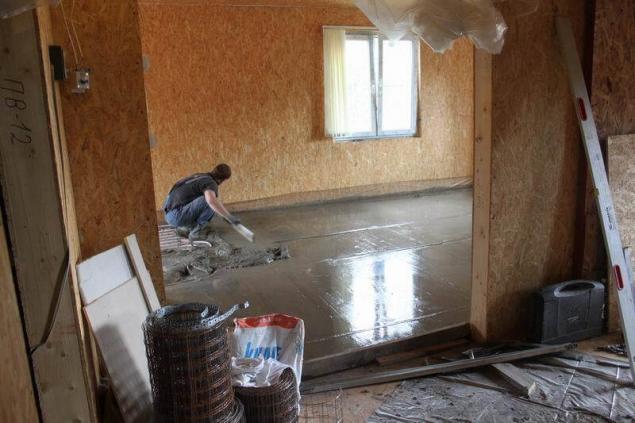
The process of the screed is very time consuming and frankly dirty. The dust was on all surfaces. The screed is dried for about two weeks during hot weather and open Windows.
In order not to delay, immediately will show how connected the boiler to warm the floors and what came of it.
Is used for heating the three-phase electric boiler Vaillant eloBlock VE12. The name implies that its capacity is 12 kW, despite the fact that the house was divided into three phase and 15 kW. That is still a margin for other users. And given the fact that the whole system was designed to work only at night, the problems with congestion were not.
The question arose: how to manage the boiler?
The boiler has only power settings and coolant temperature, timer it is not configured. But the pot supports connection of an external thermostat which closes or opens the circuit upon reaching a certain temperature. For his dedicated contacts on the Shoe. In the photo marked in red.

Bingo! No need for any of the contactors and high voltage. Are connected to the Board with a couple wires and cling to their double Fibaro Double relay Switch 2x1.5kW.

Here is the big plus was the fact that the relay itself is powered from 220V, so the second pair of wires connected to 220V (directly in the pot on the switching spring wires) and get.
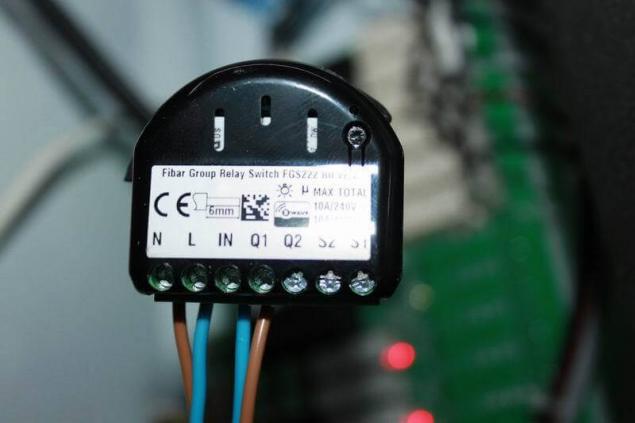
Note that the relay is signed where it connects zero and where the phase. Close the lid, leaving a tail is the antenna relay on the outside of a metal boiler body completely suppresses the signal. Find a tiny hole in the boiler no problem, so I only had to configure the power mode.
So, how to save? Electricity on the night rate is 30% lower than during the day. So at night to warm the house more profitable. How to save and store the heat I was told. In winter, at temperatures around -10 degrees, the boiler was exhibited at the temperature of 23-25 degrees and warmed the house through the day. At this time, was finishing work, so it was not necessary to make the temperature higher but the ventilation need was great, as the humidity was very high.
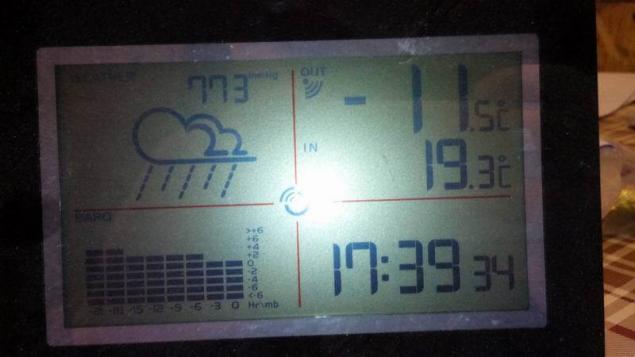
Now go to the menu controller, MI CASA VERDE VERA 3, plug-in relays and create two schedules: one relay on and the second to shut off.
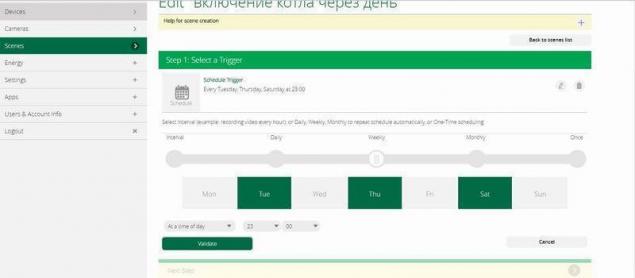

The result of all these works is very interesting to see the infrared eye.


With the heating figured out, go to ventilation.
Ventilation
It was said above that according to the chosen construction technology I got home-thermos. He has a huge advantage in terms of saving heat, but the downside is the necessity of forced ventilation. I chose exhaust ventilation by installing a duct fan in the attic. The riser is standard 120 mm sewer pipe, and then diluted flexible sleeves.
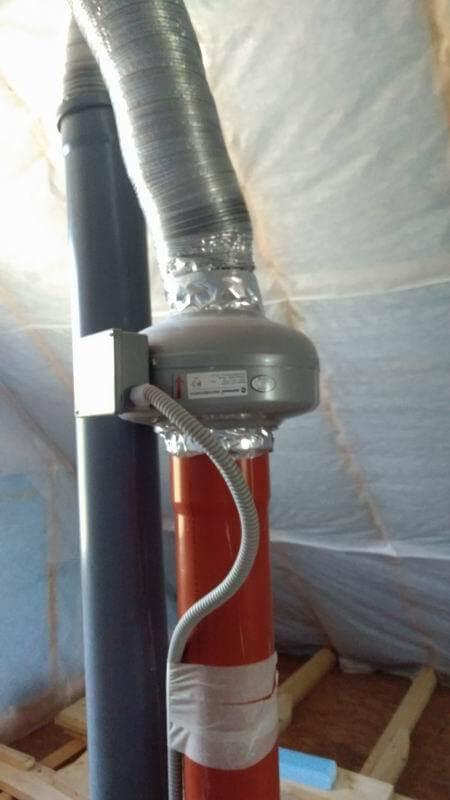
The air intake is from the toilet, bathroom and kitchen exhaust. That is thrown out of the house all the smells and moisture. Naturally, where the departed should arrive. Air flow ensure the valves on the Windows. If you took out the window without valves, they can simply buy and install. Visually, there is just an additional covering.
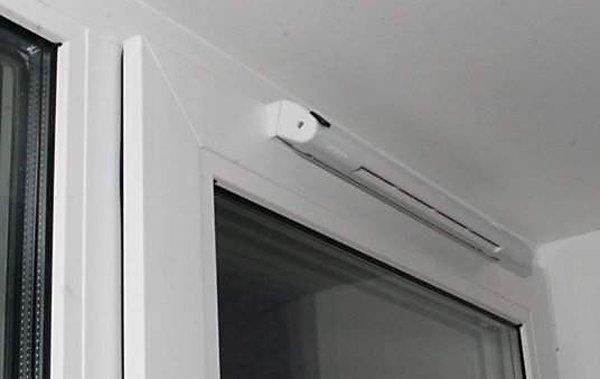
Schematically, they operate in the following way.
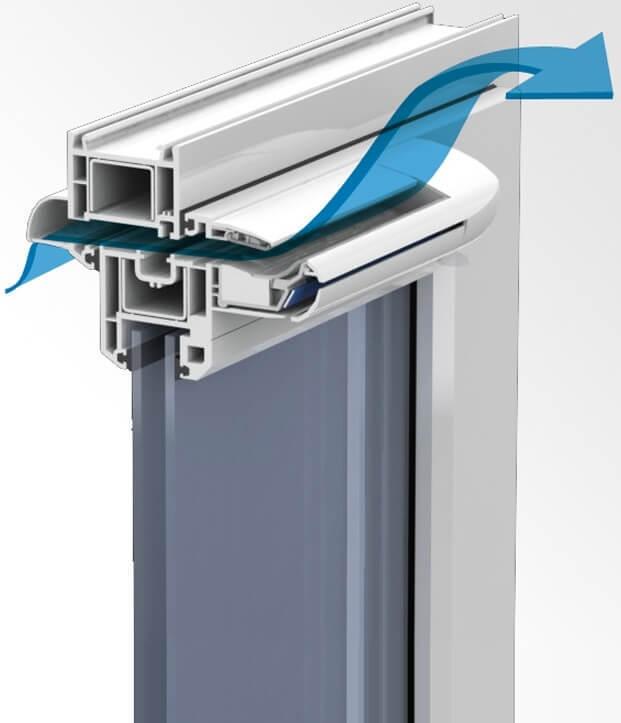
The inclusion of exhaust ventilation is performed on the script and on schedule. For your home (volume about 600 m3) I picked up the following scenario:
Lighting provided with a safe 12V voltage and corresponding led strings. To determine the light in the bathroom or toilet I had pre-laid cable 3x1.5 mm. In the two cores is power, and the third +12V back to the control panel. So is made of all ventilated premises and the point of contact, they connect through a diode, so when the light in one room didn't light at all. Next, we use the universal sensor Fibaro Universal Sensor.
According to this scheme, the ventilation has been working for a year and a half and no problems were observed.
What can I do differently? Add money and put the heat exchanger by installing forced ventilation with heating. Unfortunately, I didn't know about such things at the design stage of the house, therefore, has not laid the possibility of installing this device.
Water
Without heating and water to live in a house almost impossible. Now we are talking about a comfortable stay when you do not have to waste time on fetching water from community well or a regular stove and to clean it from the ash. If you have no Central water supply, you have to do it yourself. The most common are two options: the well and the borehole. Initially, I went on the beaten path and dug a well. My argument was simple: easy to maintain, own accumulated a container of water with a known volume, high availability of workers.
In the dry summer of 2014, the well ran dry and had to deepen on 2 rings. The situation was aggravated by the fact that after 2 weeks the water is gone even lower and only the bottom of the well was wet. It was decided to drill a well.
Then it was revealed that there are three available view well:
— bore pin;
— hole in the sand;
— hole in the limestone.
The last two were very great drilling depth (drillers often do well on the required depth, and from the budget of the customer, because you pay for every meter of penetration) and the need for additional water treatment. Such installation costs significant money, and on the construction site there are no extra money, so I decided on drilling the "Abyssinian wells" or wells "needle". Its feature is that it is drilled shallow, it is immersed pipe with a diameter of 32 mm, and the pump is on the surface.
Drilling is carried out in one day by two people.
SUBSCRIBE to OUR youtube channel that allows you to watch online, download from YouTube free video about the recovery, the rejuvenation of man. Love for others and ourselves, as the feeling of high vibrations — an important factor for improvement .
http://cdn00.vidyomani.com/c/2/5/3/wsj6cqnqfcgl/index.html
Put LIKES and share with your FRIENDS!
www.youtube.com/channel/UCXd71u0w04qcwk32c8kY2BA/videos
Subscribe -https://www.facebook.com//
In order to avoid freezing in winter, the pipe from the well to enter the house was insulated with two layers of foamed polyethylene.
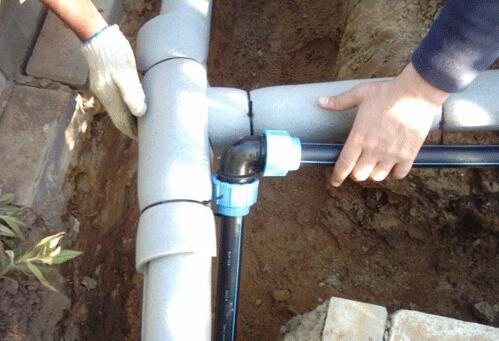
The calculation was simple: water from the well is supplied with a temperature of about 4 degrees and flowing through the pipe, it will "unfreeze" that it has time to freeze. Since no storage is not used, the pumping station is activated every time the valve opens. To avoid questions about hammering, I will say that the pumping station itself is equipped with a small tank of 0.5 liters. Is working properly it more than 1.5 years, so can recommend — Grundfos mq 3-45. Thawing pipes with running water worked only until such time as the street is not the temperature fell to -28 degrees and from evening to morning, no one opened the tap. In the morning there was no water...
Urgently were purchased self-regulating heating cable, and insulation removed from the pipe. Cable sold by the meter, but you can buy ready-made blocks, even with a plug or with terminals.
There are two types of cables: for laying inside the pipe or outside. Since the diameter of my pipe is only 32mm, it was selected a cable with an external gasket. Most schemes on the Internet it is recommended to lay the cable on the side or navit with torsion, but I think this method is questionable.
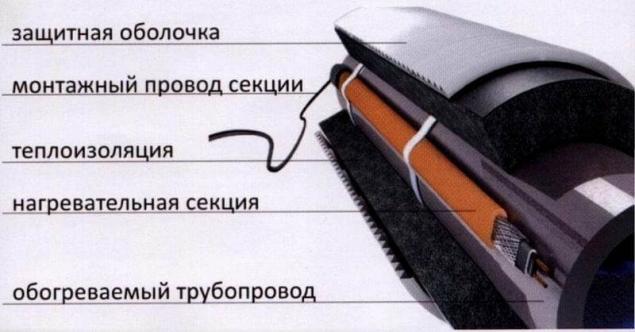
Since water and ice, according to the law of gravity, there will always be the bottom(in the right water pipe with non-return valves the air in the pipe should not be), I laid the cable on the bottom of the pipe and tightly strapped it to a conventional paper tape, and secured on top of two layers of insulation. It was not until the photos, as the outside temperatures below -20, and the house was without water. It is worth considering that the cable does not like extreme bends and has requirements for the radius of the fillet — this is stated in the instructions. The cable varies according to the power meter: I chose 15 watts per meter and did not disappoint. The tube was warmed for half an hour and the water went into the house.
Conclusion
The story turned out not so much about technique, but about how it is possible without deep knowledge of technology to configure the smooth operation of engineering systems. I didn't have anything to program the controller allows you to create very flexible scripts, although, if you wish, you can write a lot more conditions for triggering a particular rule by using the built in programming language. Once connected sensor, and actuator relay is not required additional intervention, and free officially app allows you to monitor the status of all systems directly from your smartphone. And most importantly: I save on the heating monthly order of 2-3 thousand rubles, which you can invest in the development of smart home. It is very important that smart home can be created without additional cabling — radio standard z-wave is not loaded, and the Protocol provides for control of execution of the sent command. This is not the last cycle of "Smart house", so I'm willing to answer questions or to perform tests on your home as the testing ground for this technology. published
P. S. And remember, only by changing their consumption — together we change the world! ©
Source: geektimes.ru/post/276204/
I've written about smart home gave the cat to freeze and how a smart home increases the comfort of being in the room. This time I will tell how smart home allowed me to save 30% of costs on heating, filled the house with fresh air and not allowed to freeze the water this winter. So, take out of the pack boxes and go home to teach the mind to reason!
But before you start to install the receivers and Executive blocks of the smart home, I will make a little insight into the functioning of engineering systems, to understand why, what and where is mounted. If you want to skip to the installation of a smart block, just scroll to the end of each block, where I will show you how to mount and the system of smart home.
I break the material into chunks to make it easier to read. The first and largest block is about heating, the second, smaller, about ventilation and the third is about saving the health of the water supply. This is probably the three most important factors that allow us to live in their own house in the winter. Without heat or water in the house to live not just work, but without proper ventilation the spring in the walls and ceiling can easily detect the fungus.
Heating
Heating systems there are many and they are often selected on the basis of available opportunities. I start from the fact that my house made of SIP panels, and so heat loss will not be as great as, say, a brick house. Itself SIP panel in the context looks like this: the foam, both sides covered with OSB (or OSB — Oriented strand Board).

Factory made panel according to a pre-approved plan, sign, and collectors shall be issued documentation indicating the order of connections of the panels. Built two-storey house with an area of 200 square meters in 2-3 weeks. You can make this house better in the winter or dry in summer. In the winter, because the snow is easily swept out with a broom and dry in the summer so as not to soak the foam in the seams between the panels. The foam is very hygroscopic and readily absorbs moisture.
After Assembly of the house and install Windows and doors, it turns out the thermos. The house is practically "breathes", unlike log or frame house, so you will need to mount a forced supply and exhaust ventilation. I'll provide more detail about later.
For the choice of heating system is required to determine the heat source and coolant.
Gas: since my village has no mains gas, natural gas boiler, I have deleted almost immediately. Why almost? Because I've also considered the possibility of installation of the tank and heating of propane-butane. A local company put me the minimum score for a barrel, Gazgolder with installation starting from 300 thousand rubles. In this gas pipe is mounted to the house for some money. And the room with a gas boiler must be specially prepared. With video surveillance systems easier, but the gas is still flammable. Thus, I switched to the second type of fuel.
Diesel or waste oilBoilers are stable, adjustment and set-up is that you can play in a wide temperature range. Diesel does not explode as it happens with vapors of gasoline. But the experience of operation of boilers on diesel fuel of my friends suggests that to find the normal fuel quality is still a problem. It may also be an odor. This option I rejected.
Pellets: Many of you have seen kitty litter of pressed wood chips is wood pellets. They are well lit, have good performance. Many boilers with pellet burners is easily converted to burn solid fuel — wood or coal. But even with a good boiler with a tank requires replenishment of this hopper with pellets every 2-3 days. In addition, boiler and pipe. Pellet boilers are volatile. In General, not my option.
Electric boiler: of the: electricity — one of the cheapest energy, if no mains gas. The electric boiler does not need to do pipe, fuel will not spill and will not ignite, there is no need every N hours to throw firewood. All the maintenance is reduced to timely examination of components and assemblies. Most importantly — when you should operate it does not require attention. Disadvantage: requires stable power and three-phase (highly desirable) connection to the electricity grid.
So, I chose the boiler.
For myself, I chose the easiest method of heat transfer liquid. That is, the boiler heats the liquid, the liquid transmits heat to the heaters. And here the question arose: battery or warm the floor.
Battery: cheaper and easier to install. Easily replaced by others. Allow to dry on these things :). Disadvantages are also present: the required temperature of the coolant begins 40 and ends almost 80 degrees. However, according to the physical law of convection, warm air rising, leaving floors cold, so I chose...
Floor heating: radiant floor heating is more expensive. Noticeably more expensive. It's much more expensive! But mounting such a floor throughout the house and the Bay of his screed, I got a huge battery of 200 square meters, which, although slowly heated, but accumulate heat for a long time and it gives. Yes, and walking barefoot on a nice warm.
Why not the heating cable? Yes, because to replace a blown cable (we will not exclude this) opening is required a floor covering that causes a lot of problems. In addition, radiant floor heating does not impose any restrictions on the source of heat. Today, I heat the house with electric boiler, and tomorrow will put a wood burning stove, connect it to the water circuit and will begin to burn firewood, there is always a reserve.

Pipe laid by "snail", shoulder each trunk tried to do as close to the others. By the way, the cat also went on a snail and had not crossed through the pipes.
Further, all filled screed with a minimum thickness of 5 cm And on top, you can put any flooring, whether parquet, laminate, tile or linoleum. I chose the tile and laminate. I must say that the tile gives up heat much more readily, but the laminate is more pleasant to walk barefoot.

The process of the screed is very time consuming and frankly dirty. The dust was on all surfaces. The screed is dried for about two weeks during hot weather and open Windows.
In order not to delay, immediately will show how connected the boiler to warm the floors and what came of it.
Is used for heating the three-phase electric boiler Vaillant eloBlock VE12. The name implies that its capacity is 12 kW, despite the fact that the house was divided into three phase and 15 kW. That is still a margin for other users. And given the fact that the whole system was designed to work only at night, the problems with congestion were not.
The question arose: how to manage the boiler?
The boiler has only power settings and coolant temperature, timer it is not configured. But the pot supports connection of an external thermostat which closes or opens the circuit upon reaching a certain temperature. For his dedicated contacts on the Shoe. In the photo marked in red.

Bingo! No need for any of the contactors and high voltage. Are connected to the Board with a couple wires and cling to their double Fibaro Double relay Switch 2x1.5kW.

Here is the big plus was the fact that the relay itself is powered from 220V, so the second pair of wires connected to 220V (directly in the pot on the switching spring wires) and get.

Note that the relay is signed where it connects zero and where the phase. Close the lid, leaving a tail is the antenna relay on the outside of a metal boiler body completely suppresses the signal. Find a tiny hole in the boiler no problem, so I only had to configure the power mode.
So, how to save? Electricity on the night rate is 30% lower than during the day. So at night to warm the house more profitable. How to save and store the heat I was told. In winter, at temperatures around -10 degrees, the boiler was exhibited at the temperature of 23-25 degrees and warmed the house through the day. At this time, was finishing work, so it was not necessary to make the temperature higher but the ventilation need was great, as the humidity was very high.

Now go to the menu controller, MI CASA VERDE VERA 3, plug-in relays and create two schedules: one relay on and the second to shut off.


The result of all these works is very interesting to see the infrared eye.


With the heating figured out, go to ventilation.
Ventilation
It was said above that according to the chosen construction technology I got home-thermos. He has a huge advantage in terms of saving heat, but the downside is the necessity of forced ventilation. I chose exhaust ventilation by installing a duct fan in the attic. The riser is standard 120 mm sewer pipe, and then diluted flexible sleeves.

The air intake is from the toilet, bathroom and kitchen exhaust. That is thrown out of the house all the smells and moisture. Naturally, where the departed should arrive. Air flow ensure the valves on the Windows. If you took out the window without valves, they can simply buy and install. Visually, there is just an additional covering.

Schematically, they operate in the following way.

The inclusion of exhaust ventilation is performed on the script and on schedule. For your home (volume about 600 m3) I picked up the following scenario:
- Exhaust fan turns on every hour for 10 minutes from 9 to 22 (to the night quiet)
- Exhaust fan turns on every time the lights in the bathroom or toilet
Lighting provided with a safe 12V voltage and corresponding led strings. To determine the light in the bathroom or toilet I had pre-laid cable 3x1.5 mm. In the two cores is power, and the third +12V back to the control panel. So is made of all ventilated premises and the point of contact, they connect through a diode, so when the light in one room didn't light at all. Next, we use the universal sensor Fibaro Universal Sensor.
According to this scheme, the ventilation has been working for a year and a half and no problems were observed.
What can I do differently? Add money and put the heat exchanger by installing forced ventilation with heating. Unfortunately, I didn't know about such things at the design stage of the house, therefore, has not laid the possibility of installing this device.
Water
Without heating and water to live in a house almost impossible. Now we are talking about a comfortable stay when you do not have to waste time on fetching water from community well or a regular stove and to clean it from the ash. If you have no Central water supply, you have to do it yourself. The most common are two options: the well and the borehole. Initially, I went on the beaten path and dug a well. My argument was simple: easy to maintain, own accumulated a container of water with a known volume, high availability of workers.
In the dry summer of 2014, the well ran dry and had to deepen on 2 rings. The situation was aggravated by the fact that after 2 weeks the water is gone even lower and only the bottom of the well was wet. It was decided to drill a well.
Then it was revealed that there are three available view well:
— bore pin;
— hole in the sand;
— hole in the limestone.
The last two were very great drilling depth (drillers often do well on the required depth, and from the budget of the customer, because you pay for every meter of penetration) and the need for additional water treatment. Such installation costs significant money, and on the construction site there are no extra money, so I decided on drilling the "Abyssinian wells" or wells "needle". Its feature is that it is drilled shallow, it is immersed pipe with a diameter of 32 mm, and the pump is on the surface.
Drilling is carried out in one day by two people.
SUBSCRIBE to OUR youtube channel that allows you to watch online, download from YouTube free video about the recovery, the rejuvenation of man. Love for others and ourselves, as the feeling of high vibrations — an important factor for improvement .
http://cdn00.vidyomani.com/c/2/5/3/wsj6cqnqfcgl/index.html
Put LIKES and share with your FRIENDS!
www.youtube.com/channel/UCXd71u0w04qcwk32c8kY2BA/videos
Subscribe -https://www.facebook.com//
In order to avoid freezing in winter, the pipe from the well to enter the house was insulated with two layers of foamed polyethylene.

The calculation was simple: water from the well is supplied with a temperature of about 4 degrees and flowing through the pipe, it will "unfreeze" that it has time to freeze. Since no storage is not used, the pumping station is activated every time the valve opens. To avoid questions about hammering, I will say that the pumping station itself is equipped with a small tank of 0.5 liters. Is working properly it more than 1.5 years, so can recommend — Grundfos mq 3-45. Thawing pipes with running water worked only until such time as the street is not the temperature fell to -28 degrees and from evening to morning, no one opened the tap. In the morning there was no water...
Urgently were purchased self-regulating heating cable, and insulation removed from the pipe. Cable sold by the meter, but you can buy ready-made blocks, even with a plug or with terminals.
There are two types of cables: for laying inside the pipe or outside. Since the diameter of my pipe is only 32mm, it was selected a cable with an external gasket. Most schemes on the Internet it is recommended to lay the cable on the side or navit with torsion, but I think this method is questionable.

Since water and ice, according to the law of gravity, there will always be the bottom(in the right water pipe with non-return valves the air in the pipe should not be), I laid the cable on the bottom of the pipe and tightly strapped it to a conventional paper tape, and secured on top of two layers of insulation. It was not until the photos, as the outside temperatures below -20, and the house was without water. It is worth considering that the cable does not like extreme bends and has requirements for the radius of the fillet — this is stated in the instructions. The cable varies according to the power meter: I chose 15 watts per meter and did not disappoint. The tube was warmed for half an hour and the water went into the house.
Conclusion
The story turned out not so much about technique, but about how it is possible without deep knowledge of technology to configure the smooth operation of engineering systems. I didn't have anything to program the controller allows you to create very flexible scripts, although, if you wish, you can write a lot more conditions for triggering a particular rule by using the built in programming language. Once connected sensor, and actuator relay is not required additional intervention, and free officially app allows you to monitor the status of all systems directly from your smartphone. And most importantly: I save on the heating monthly order of 2-3 thousand rubles, which you can invest in the development of smart home. It is very important that smart home can be created without additional cabling — radio standard z-wave is not loaded, and the Protocol provides for control of execution of the sent command. This is not the last cycle of "Smart house", so I'm willing to answer questions or to perform tests on your home as the testing ground for this technology. published
P. S. And remember, only by changing their consumption — together we change the world! ©
Source: geektimes.ru/post/276204/
Serial elektromototsikl Harley-Davidson will be released in the next 5 years
5 very good reasons with great respect to my intestines
